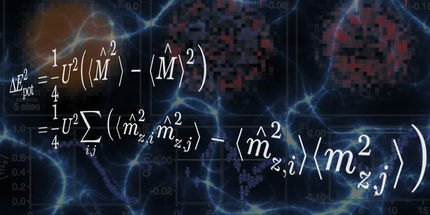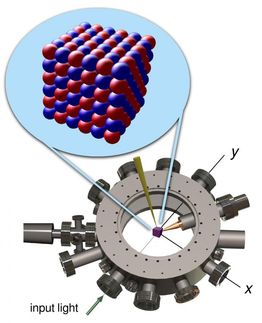A new look at high-temperature superconductors
Advertisement
While the phenomenon of superconductivity has been known for more than a century, the temperature at which it occurs has remained too low for any practical applications. The discovery of "high-temperature" superconductors in the 1980s led to speculation that a surge of new discoveries might quickly lead to room-temperature superconductors. Despite intense research, these materials have remained poorly understood.
There is still no agreement on a single theory to account for high-temperature superconductivity. Recently, however, researchers at MIT and elsewhere have found a new way to study fluctuating charge-density waves, which are the basis for one of the leading theories. The researchers say this could open the door to a better understanding of high-temperature superconductivity, and perhaps prompt new discoveries of higher-temperature superconductors.
The findings were published in Nature Materials by assistant professor of physics Nuh Gedik; graduate student Fahad Mahmood; Darius Torchinsky, a former MIT postdoc who is now at the California Institute of Technology; and two researchers at Brookhaven National Laboratory.
Explaining the basis for high-temperature superconductivity remains "the hardest problem in condensed-matter physics," Gedik says. But one way of getting a handle on this exotic state of matter is to study what happens to these materials near their "transition temperature," the point below which they become superconductors.
Previous experiments have shown that above the transition temperature, there is a peculiar state where, Gedik says, "the material starts to behave very weirdly": Its electrons act in unusual ways, which some physicists believe is caused by a phenomenon called charge-density waves. While the electron density in most conductors is uniform, Gedik explains, in materials with charge-density waves the density is distributed in a sinusoidal pattern, somewhat like ripples on a pond. But so far, such charge-density waves have only been detected in high-temperature superconductors under special circumstances, such as a particular level of doping (the introduction of atoms of another element onto its surface).
Some researchers have proposed that these waves are elusive in high-temperature superconductors because they fluctuate very rapidly, at speeds measured in picoseconds (trillionths of a second). "You can't see it with conventional techniques," Gedik says.
That's where Gedik's new approach comes in: His team has spent years perfecting methods for studying the movement of electrons by zapping them with laser pulses lasting just a few femtoseconds (or quadrillionths of a second), and then detecting the results with a separate laser beam.
Using that method, the researchers have now detected these fluctuating waves. To do this, they have selectively generated and observed two different collective motions of electrons in these waves: variation in amplitude (the magnitude of modulation of the waves) and in phase (the position of the troughs and peaks of the waves). These measurements show that charge density waves are fluctuating at an interval of only about 2 picoseconds.
"It's not surprising that static techniques didn't see them," Gedik says, but "this settles the question: The fluctuating charge-density waves do exist" — at least in one of the cuprate compounds, the first high-temperature superconducting materials discovered in the 1980s.



























































